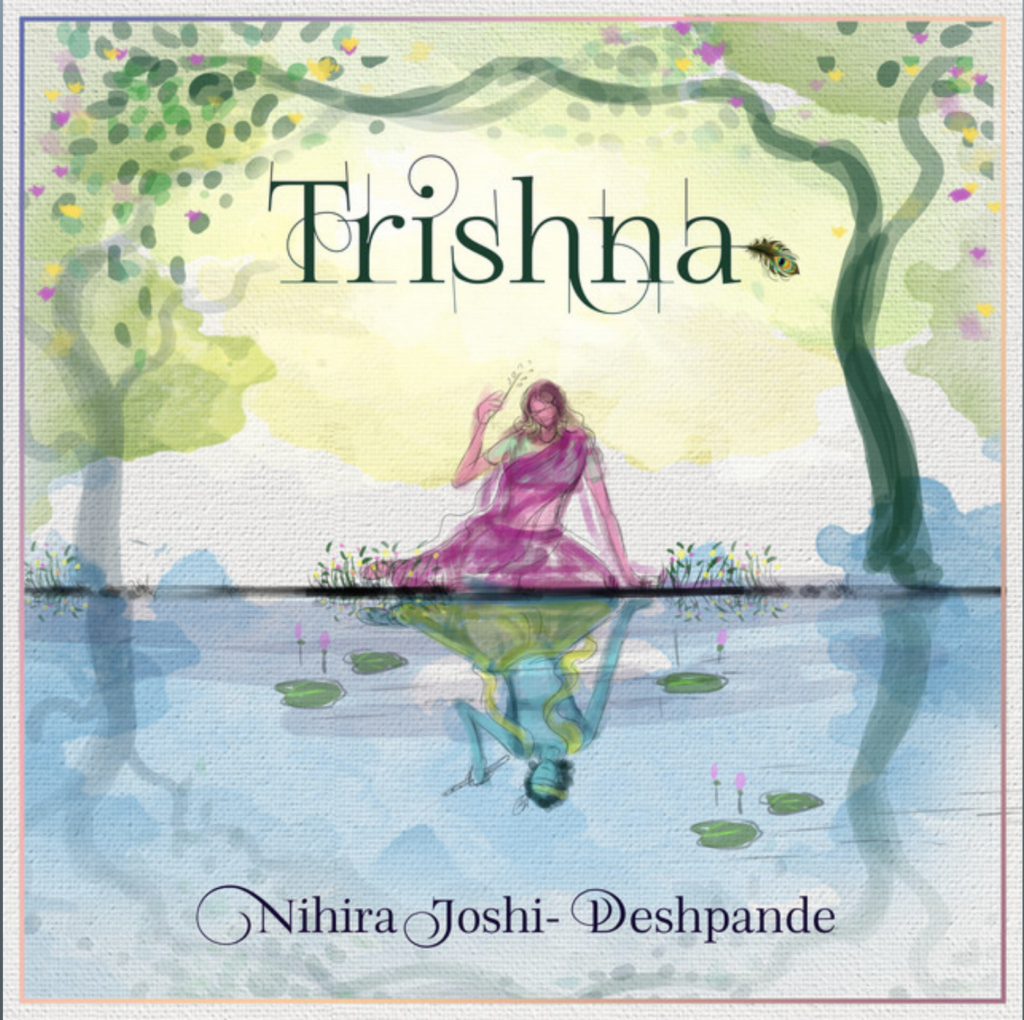Nihira Joshi, apart from being the singer, has also composed the four songs of the EP ‘Trishna’. The compositions are nicely polished by arrangements by some very talented and well-known producers. Mayukh Sarkar, Saurabh Bhalerao have worked on the arrangements, and their experience in working on contemporary popular music and knowledge of classical music reflects well.
The word Trishna roughly translates to ‘longing’, which is the theme that each track of this EP is touching upon. The EP is about Bhakti to Krishna, and the lyrics convey the emotions of aspiration very precisely. All this by using nature and time as metaphors for mode of expression.
The duo Carlos Cano & Hernán Milla have arranged the first song. This international collaboration EP has blend of piano and clarinet, both being widely used part of the western classical music come together nicely with the Indian classical vocalization. The first track ‘Antarman’ is one good example where the vocals and clarinet play joyfully with each other. It is as if a very respectful julagbandi is captured on recording. Both elements giving each other space to make the song more vibrant.
‘Trishna Spandan ki’ is the second track of the EP. This song is very atmospheric with the percussion playing throughout the entire song in the rhythm of a heartbeat. The lyrics compliment the music by wording the intensity of wanting the presence of Krishna in his absence. Like the second song, the third song is also arranged by Mayukh Sarkar. It can be awarded as the sweetest song of this EP by taking into account the lyrics as well as the composition.
The fourth song is arranged by Saurabh Bhalerao and is versatile in its style. In traditional sense, it is perhaps the most classical out of all the four tracks and hence marks as an enchanting closing to the EP.
Nihira has based these 4 songs on four different ragas, but then has also taken the liberty to drift off of those ragas to let the melody find its own path. After all, getting lost in art is the true beauty of bhakti. The singer and producers have taken all the proper opportunities to enhance the EP by adding tools of classical vocalization to it. Meend, meaning the glides between the notes, and using khatka to divert out of the ragas are some the most prominent tools used in the tracks.
All tracks being semi-classical, the soul of Bhakti and the nuances of classical singing tools have been confidently knit together. Having multiple musicians and lyricists work on the different songs to form a collective is what makes the compositions soothing for the ears of the listeners.
Verdict: Thoughtful, collaborative, grounded.








